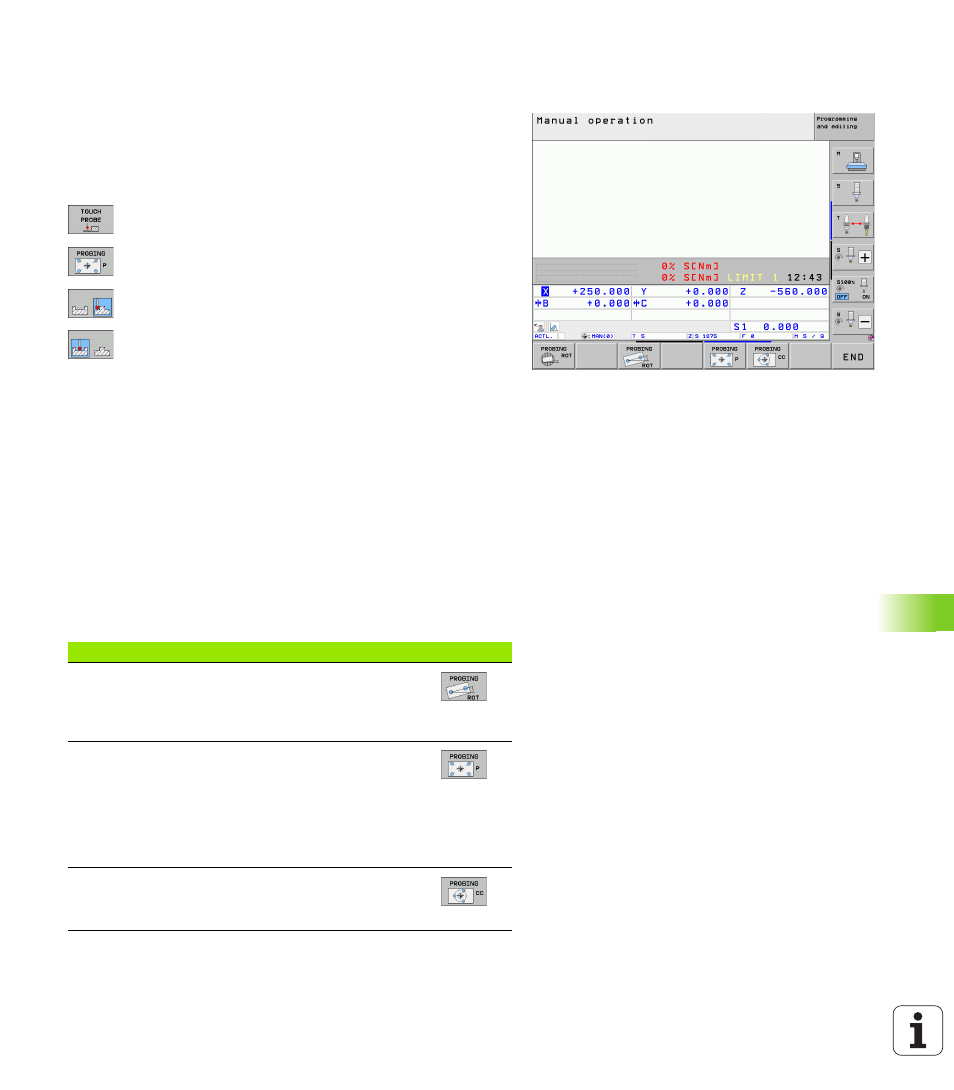Setting datum points using holes/cylindrical studs, 9 d a tu m set ting with a 3-d t o uc h pr obe – HEIDENHAIN iTNC 530 (606 42x-02) User Manual
Page 591

HEIDENHAIN iTNC 530
591
14.9 D
a
tu
m Set
ting with a 3-D T
o
uc
h Pr
obe
Setting datum points using holes/cylindrical
studs
A second soft-key row provides soft keys for using holes or cylindrical
studs to set a reference point
Define whether a hole or stud is to be probed
The default setting is for probing holes.
U
Select the probe function by pressing the TOUCH
PROBE soft key, shift the soft-key row.
U
Select the probe function: For example, press the
PROBING P soft key.
U
Circular studs are to be probed. Define by soft key.
U
Holes are to be probed. Define by soft key.
Probing holes
Pre-position the touch probe approximately in the center of the hole.
After you have pressed the NC Start key, the TNC automatically
probes four points on the wall of the hole.
Move the touch probe to the next hole repeat the probing process. and
have the TNC repeat the probing procedure until all the holes have
been probed to set reference points.
Probing cylindrical studs
Position the ball tip at a starting position near the first touch point of
the stud. Select the probing direction by soft key and press the
machine START button to start probing. Perform the above procedure
four times.
Overview
Cycle
Soft key
Basic rotation using 2 holes:
The TNC measures the angle between the line
connecting the centers of two holes and a nominal
position (angle reference axis).
Datum using 4 holes:
The TNC calculates the intersection of the line
connecting the first two probed holes with the line
connecting the last two probed holes. You need to
probe diagonally opposite holes one after another (as
shown on the soft key), as otherwise the datum
calculated by the TNC will be incorrect.
Circle center using 3 holes:
The TNC calculates a circle that intersects the centers
of all three holes, and finds the center.